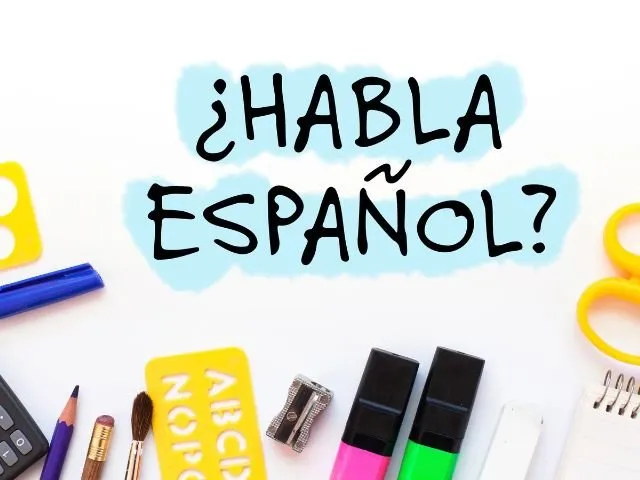
10 Little Translation Mistakes That Caused Big Problems
Learning a foreign language is achievable, but it comes with numerous challenges. Despite conversational ability, grammar rules may occasionally be forgotten, resulting in translation errors.

Spanish is the second most spoken native language in the world, after Mandarin Chinese, and the third most widely spoken language, with the total number of native and non-native speakers being around 580 million. This impressive number comes from the fact that Spain was a strong conquistador in the 16th century and managed to colonize large territories and pass on their language. Most of the native speakers are located either in Spain or in Latin America, specifically in Mexico. People who live in either region can perfectly understand the speakers from the other one. Still, these are different types of Spanish that we’ll be addressing today.
Spain and Mexican Spanish differ due to the huge geographical distance and centuries that have passed since the colonization. The cultural differences also impacted the changes, which led to the fact that the two variations differ in several aspects today. Below, we'll break it all down.
Spain Spanish is also known as Castilian Spanish because it originated in the Castile region in Spain. This Romance language evolved from Vulgar Latin, which was spoken in the Roman Empire by common people. According to many linguistic educational blog insights, as the language started to spread and people started using it in written form, it began to develop into different Romance languages, including Spanish.
Spanish was shaped by numerous cultural and linguistic influences, including Arabic. At first, different versions of Spanish were spoken across the country in regions such as Andalusia, Catalonia, and Castile. Later, they started to merge into one- the one we call standard Spanish today.
So, how did Mexican Spanish develop, and what happened there?
In the 16th century, Spain became a colonizer and started to conquer new territories and spread their influence globally. Once the colonizers arrived in Mexico, they found indigenous civilizations that spoke their native Mexican languages. At first, the colonizers used these local languages to communicate with the people who lived there. Over time, the Spanish became more dominant and started to take over.
There were different ways in which Spanish was spread across Mexico until it became predominant as it is today. That includes:
Colonial Administration
Spanish colonizers started to use the Spanish language for administration and official government business. That means that anyone who wanted to take part in the newly established system needed to speak the language. They used it in all official and legal documents.
Catholic Church
The Catholic church sent missionaries to different parts of Mexico to establish churches and schools. They imposed it on the local indigenous people, who learned Spanish in the process.
Marriage
Over time, the settlers and the locals were living together, and soon there were marriages between them. This way, Spanish was further spread.
Later on, Spanish became the official language of education in Mexico. More settlers were coming after the colonization period from Spain and other Spanish-speaking countries. They strengthened the Spanish language and culture and led to what some call the Mexican language today.
Now, let’s take a look at the situation today and the official languages that are spoken both in Spain and Mexico.
When it comes to official languages in Spain, that is Spanish, or as some refer to it- Castilian Spanish. That is the standard version of the language, the one students around the world are being taught in Spanish classes.
However, there are 4 more languages that are called co-official regional languages. That means they have the status of an official language in their autonomous communities. These communities are regions in Spain that have a certain level of autonomy. Those languages are:
All four of the languages are protected by the Spanish Constitution for their cultural value.
Now let’s look at which languages are spoken in Mexico and which have the status of an official language.
The only official language in Mexico is Spanish, with more than 125 million native and non-native speakers using it on this territory.
However, due to the historical background that we've talked about above, there are many other indigenous languages in Mexico that do not have the status of an official language. If you’re wondering how many languages are spoken in Mexico, there are 68 distinct native Mexican languages recognized and protected as the cultural heritage of Mexico. Some of the most widely spoken include:
So, apart from Spanish as Mexico's official language, other languages are used as well, by minorities from different regions.
When comparing Spanish spoken in Spain to Spanish spoken in Mexico, we're able to find differences in several aspects. These differences are noticeable, but a Mexican wouldn’t need to use Spanish translation services or vice versa. They’re not as crucial to causing any issues in communication between speakers of these two language versions.
These differences are caused by several factors. Since the Spanish came to Mexico in the 16th century, the two versions of the language continued to evolve under different circumstances and influences. Here are the main causes of language differences in the Mexican vs Hispanic domain:
As the two languages were developing and evolving on two different sides of the world, they were influenced and shaped by completely different factors. Plus, each one developed culture-specific terms and regional and local phrases that are only applied on the local level.
Here are the main categories of Spain Spanish vs Mexican Spanish differences.
Vocabulary differences in Spain and Mexico can sometimes cause a bit of confusion in a conversation, but nothing that can’t be resolved with additional context, some mime, or charades. Still, we've made a list of the most commonly used words that have a different version in Spain and Mexico or are a part of Mexican Spanish slang
|
Spain Spanish |
Mexican Spanish |
English |
|
piso |
departamento |
apartment |
|
coche |
carro |
car |
|
patata |
papa |
potato |
|
maní |
cacahuate |
peanut |
|
bocadillo |
torta |
sandwich |
|
bolígrafo |
pluma |
pen |
|
autobús |
camión |
bus |
|
móvil |
celular |
mobile phone |
|
gafas |
lentes |
eyeglasses |
|
pomelo |
toronja |
grapefruit |
|
melocotón |
durazno |
peach |
|
helado |
nieve |
Ice-cream |
|
zumo |
jugo |
juice |
|
ducharse |
bañarse |
take a shower |
You can easily learn and use Mexican words when in Mexico and Spanish when in Spain. If you don't, you don't have to worry since you’ll be understood in the end either way.
When it comes to pronunciation, there are differences between Mexican and Spain Spanish. These differences create no confusion in communication but are distinct and thus worth mentioning. This is especially important for people learning Spanish for the first time with a plan of visiting or moving to either Spain or Mexico. In that case, USCIS translation services can come handy for your official documents.
The biggest and thus main difference in pronunciation is in ce, ci, ze, and zi. The c’s and z’s pronounced before e and i, are pronounced differently in Spain and Mexico.
In Spain, you'll hear a soft lisp and a sound that resembles 'th'. However, in Mexico, you'll hear a regular 's'. The following examples will help you understand.
|
Spain Spanish |
Mexican Spanish |
|
|
cerveza (bear) |
ther-be-tha |
ser-ve-sa |
|
grazias (thank you) |
gra-thi-as |
gra-si-as |
|
Barcelona |
bar-the-lo-na |
bar-se-lo-na |
Finally, another notable difference between the two variations of Spanish can be found in the grammar. Particularly, the main difference is in the formal and informal form of the second person plural, which is used and taught in Spain, but not in Mexico.
So, in Spain, you’ll learn that vosotros is the informal second-person plural pronoun, while ustedes is the formal one. You’ll use them interchangeably, depending on who you’re addressing or what situation you’re in.
However, in Mexico, you’ll only be using ustedes.
Languages are one of the main parts of our identity. As a translation service, you need to offer localization to your customers. This is the only way for them to be addressing their target audience the way they want to be addressed. This is because the best way to reach your aim auditory fully is to localize your content. A good translation or localization service will thus help you make sure every word is properly placed, even if it's just localizing Spanish content for a Mexican audience.
There are three types of localization that every translation service should be offering and applying.
Multimedia
Everybody’s publishing video or audio materials across their website, social media, and other platforms. This content needs adaptation to the target language and the culture of the people who speak it. That includes subtitles and voice-over.
IT & Software
We live in a digital era that imposes a modern environment for all businesses. Websites, gamification, and applications are widely used to send a business message, reach an audience, and find customers and clients. This is why website localization, app localization, and application localization are a must for translation services.
eLearning Translation
Finally, with the rise of remote learning, translation services are facing a high demand for translation in the eLearning domain. They get to do everything from coursework and lessons transcription translation to high school diploma translation and college application translation.
As you can see, the Spanish spoken in Mexico differs from the Spanish spoken in Spain. Some would call it the Mexican accent or dialect, but the important thing is that these differences are minor. Smooth communication is established easily between speakers from these two different countries.
Hopefully, this overview helped you understand all about the history of Spanish, how it got spread to Mexico, and how it evolved from thereon. It certainly answered questions like is Mexican a language or which version of Spanish is the oldest and standard one.

Learning a foreign language is achievable, but it comes with numerous challenges. Despite conversational ability, grammar rules may occasionally be forgotten, resulting in translation errors.

How many different languages are spoken in China is a good thing to check when one needs documents translated for a particular local business partner.

Today, more than ever in the past, marketers are seeing the value in reaching out to multicultural customers. In some cases, the need is obvious.
Your personal account was created successfully. Login details were sent to your email.
Thank you for choosing our service!
You have registered your account successfully!
Your application was sent to our
HR Departament.
Get prepared to pass several proficiency tests to prove your skills as we hire only the best experts to deliver the best quality to our Clients. We will contact you soon for futher instructions